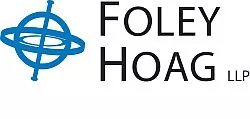- in United States
- within Media, Telecoms, IT and Entertainment topic(s)
U.S. grid operators and policymakers are rushing to prepare for
the Trump Administration's threatened tariffs on imported
Canadian electricity and the Canadian reaction, an unprecedented
state of affairs disrupting one of the most integrated
international electric grids in the world. As Ben Storrow wrote for
E&E News, "Electricity has not
traditionally been subject to tariffs. Electrons don't stop at
the local customs office to be inspected."
Nevertheless, this aspect of the on-again, off-again trade skirmish
with our northern neighbor may send power prices soaring across the
northern United States. Whether or not these tariffs become
reality, the tension intensified further yesterday, March 10, with
Ontario's imposition of a retaliatory 25% tariff on the
province's electricity exports to U.S. markets. While the
tariffs will create upward pressure on wholesale power prices,
rewarding certain U.S. generators and transmission owners, a
long-term U.S.-Canada electricity trade war will negatively impact
consumers and make it more difficult for states to affordably
pursue their decarbonization targets.
Currently, power flows freely across the U.S.-Canada border via a
number of interchanges. U.S. and Canadian generators have long made
use of access to each other's markets, while U.S. and Canadian
grid operators have enjoyed the security that comes from being able
to draw on imports in the event of a reliability squeeze. In
particular, the New England and New York control areas, managed by
ISO New England Inc. ("ISO-NE") and the New York
Independent System Operator ("NYISO"), rely on power
flows between their grids and those of their Canadian neighbors to
ensure system reliability and keep electricity costs low. ISO-NE
has a total transfer capacity of more than 3 gigawatts with the
Québec and New Brunswick systems, two Canadian grid
operators who have combined to serve roughly 11% of New
England's load annually since 2020. The NYISO is just as intertwined with the Canadian grid, utilizing 4.6 gigawatts of transfer capacity
to import energy from Hydro-Québec and Ontario's
Independent Electricity System Operator ("IESO").
On February 1, 2025, President Trump issued an Executive Order ("EO") announcing
sanctions affecting a swath of Canadian goods, including a tariff
on imported energy products such as oil and gas (at 10%) and
electricity (at either 10% or 25%; the EO was unclear as to which
rate would apply). On February 28, 2025, with the tariff set to
come into effect on March 4, ISO-NE and the NYISO rushed to file
emergency (or "exigent circumstance") tariff revisions
with the Federal Energy Regulatory Commission ("FERC").
(See the ISO-NE filing here and the NYISO filing here.) Because ISO-NE and the NYISO are bound
by FERC's filed rate doctrine, absent modifications to their
own procedures, ISO-NE and the NYISO could be unable to begin
collecting import tariffs and could potentially face insolvency.
Both grid operators sought approval for the proposed tariff changes
to take immediate effect.
While addressing a joint session of Congress on March 6, 2025,
President Trump signaled that tariffs on Canadian imports
would be delayed until April 2. But the uncertainty associated with
his administration's threats is already having effects.
Yesterday, the province of Ontario imposed its own retributive 25%
tariff on electricity exports to U.S. markets. In a statement
announcing the tariff, Ontario Premier Doug Ford warned that
"[until] the threat of tariffs is gone for good, Ontario
won't back down." Later in the day, Québec Premier
François Legault announced that Québec Province may
order the cessation of any sales of Québecois
electricity in the U.S. spot markets, and that Québec may
revisit its multibillion-dollar power contracts to sell power into
Massachusetts and New York via transmission lines that are set to
enter operation in the coming year.
The costs to consumers in New England and New York of electricity
tariffs could be severe. In its February 28 filing, ISO-NE
estimated that import duties could amount to between $66 million
and $165 million annually, an estimate that does not appear to
account for the costs of retaliatory Canadian actions like the
Ontario export tariff. In the coming years, both ISO-NE and the
NYISO were set to rely on power and energy imports from Canada to
serve growing demand and meet reliability needs. Tariffs on
Canadian imports make it more expensive to do so.
Rising prices in northern U.S. wholesale electricity markets would
favor U.S. generators and transmission owners who currently serve
those markets—as well as those developers of generation or
transmission facilities who can credibly promise to serve those
markets in the near future—but harm U.S. consumers.
Displacing Canadian hydropower imports may also result in a more
carbon-intensive generation mix serving the region.
When the dust settles from this ongoing spat, the ramifications for
the NYISO, ISO-NE, and other U.S. electricity markets will become
clearer. Follow along with us as we track these tariffs and their
effects in the coming months.
The content of this article is intended to provide a general guide to the subject matter. Specialist advice should be sought about your specific circumstances.



